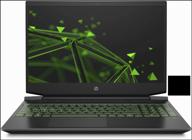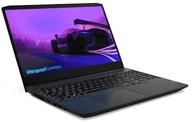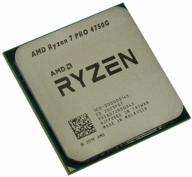
Review on 13.3" ASUS Zenbook Flip S OLED UX371EA-HL152T 3840x2160 notebook, Intel Core i5 1135G7 2.4 GHz, RAM 8 GB, SSD 512 GB, Intel Iris Xe Home Graphics, Windows 10, 90NBR0800G, black by Adam Rymko ᠌

Just super, it's beautifully made, I'm very happy with it.
I have been choosing a convertible ultrabook for a long time and I can say that Asus's price offer is now 10-15% lower than all competitors (primarily HP), for the same money they usually offer FHD and IPS-matrix. After working for more than a month, I revealed some shortcomings in the software part, so I will share the current solutions: 1. Modern standby can destroy your laptop, turn it off immediately, otherwise it will fry while in a case! 2. Delete system devices starting with the words Intel Dynamic Tuning. Then add the . reg file that you will find in the first link under the phrase "nodptf project github" (otherwise the removed devices will return after some time). This will prevent the laptop from rolling down to 390MHz. 3. Here is a list of absolutely unnecessary services: Asus App Service Asus Link Near Asus Link Remote Asus Switch Asus System Analysis Asys PTP Service (after disabling, the touchpad will not blunt) Intel Dynamic Tuning Manager 4. After removing DTT, the processor will operate in 12W mode, which is enough for 1.5GHz frequency. To correct this situation, I recommend installing the ThrottleStop program. Set the following options: 4.1. Disable Turbo (in our laptops, there is no point in turbo mode with such a weak cooling subsystem). 4.2. On the FIVR tab, enable the "Disable and Lock Turbo Power Limits" option. 4.3. On the TPL tab enable options PL1=14, PL2=18. In general, I'm not sure that 4.2. and 4.3. somehow work, but if they worked, then these parameters would be optimal. 5. By default, the color is turned up very strongly in favor of working in HDR mode, which is almost always turned off to save battery. Open the Intel Graphics Control Utility - and set the saturation setting from 50% to 35%. And I would like to praise separately for the built-in numeric keypad mode (NumLock) right in the touchpad. This is something that many lack in laptops of this size. I pressed the button on the upper right corner of the touchpad and voila! , you have a block of numeric buttons at your fingertips!
- Matrix OLED 4K. Price. Nice metal body. Very nice large keyboard (with Insert key). Optional Num-pad mode in the touchpad. Compact power supply. 1TB NVMe, instead of 512GB from competitors. A good margin of minimum brightness (important for working in the dark). 2 year factory warranty (starting from the date of manufacture). 1 year extended warranty can be purchased for $33. Capacious battery 67W.
- Windows home Type-C ports on one side. Indistinct power button. There are traces of keys on the display (I'm afraid that it may rub off over time). The DPTF processor power control code has not been optimized. The LEDs under the function keys are very bright. There is no light sensor, the display brightness has to be adjusted manually. In the dark, it's hard to find the keyboard backlight button (F7, by touch). No support for classic S3 standby. No auto power on laptop when opening lid after hibernation/shutdown. Asus doesn't have a proprietary Thunderbolt (and DisplayPort) dock.
New products
Comments (0)
Top products in 💻 Laptops

HP FHD Touchscreen Quad Core I7 1065G7

104 Review

HP Pavilion Gaming 15-ec2048ur 15.6" Laptop 1920x1080, AMD Ryzen 5 5600H 3.3GHz, 8GB RAM, 512GB SSD, NVIDIA GeForce RTX 3050, DOS, 4E0T5EA, Dark Grey/Bright Green Chrome Logo

77 Review

Apple MacBook 13 Inch 2 3GHz 256GB

92 Review

Lenovo IdeaPad Gaming 3: 15.6 Inch AMD Ryzen Gaming Laptop with RTX 3060 6GB GDDR6

118 Review
Another interesting products

HP Pavilion Gaming Desktop Computer, Ryzen 5 3500 Processor, NVIDIA GTX 1650 4 GB, 8 GB RAM, 512 GB SSD, Windows 10 Home (TG01-0030, Black)

11 Review

27" Apple iMac All-in-One (Retina 5K, Mid 2020) MXWT2RU/A, 5120x2880, Intel Core i5 3.1GHz, 8GB RAM, 256GB SSD, AMD Radeon Pro 5300, MacOS, Silver

13 Review

Processor AMD Ryzen 7 PRO 4750G AM4, 8 x 3600 MHz, OEM

11 Review

Refurbished 2019 Apple iMac with Retina 4K/3.6 GHz Intel Core i3 🖥️ Quad-Core (21.5-Inch, 8GB RAM, 1TB) - Silver: Ultimate Deal on a Powerful Renewed Desktop!

13 Review

